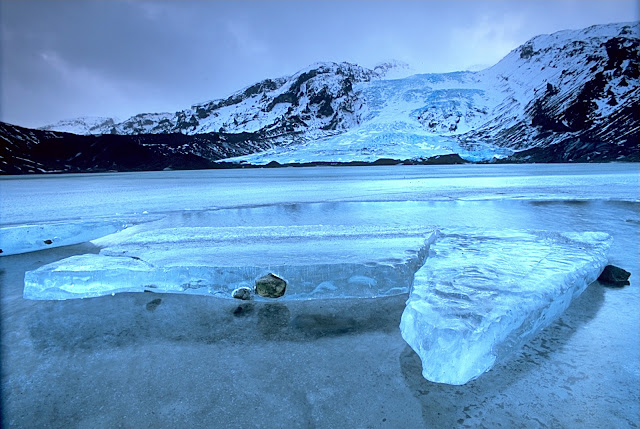Tectonic Travel
Tuesday, May 14, 2013
Japan
In subduction, specifically ocean-continent subduction, two plates move toward each other. This is similar to collision, except the denser plate, the ocean plate, is forced under the continent plate. They do not push against each other to form mountains. However, the ocean plate carries water with it below the continental crust. This melts the extremely hot but solid rock. This magma bores its way up through the lithosphere to create volcanoes. Subduction can also result in a deep-sea trench bordering the land, and earthquakes.
I am visiting Japan, where four different plates meet. I will visit the area near the Japan Trench, where the Pacific Plate is subducting beneath the North American plate. Although Japan's volcanoes are less talked about than its earthquakes, Japan is part of the Pacific Ring of Fire. The Sakurajima volcano erupted last February. Most people have heard of Japan's numerous earthquakes. Because Japan is surrounded by sea, this can cause devastating tsunamis.
I have visited Nagasaki and some of the surrounding areas. It's hot and muggy here in the summer, but beautiful.
Monday, May 13, 2013
The Himalayas
In a collision boundary, two plates move toward each other, like in a subduction boundary. However, they are the same density, so neither can go on top of each other. They push together and eventually are pressed up at the seam into a mountain range. This can also cause earthquake activity, because of the pressure between the two plates.
One example occurs in Nepal, in which the Indian Plate and the Eurasian Plate collide. They have formed a huge mountain range, the Himalayas, home to the tallest mountain in the world, Mt. Everest. The last large earthquake was in 1934, rated 8.1, although a smaller one occurred only a couple years ago. Earthquakes are said to occur every 80 years, so one may come soon.
I'm not the mountain-climbing type, so I chose to visit some small villages instead. It was a very different cultural experience. I have included the obligatory mountain photo, though, because this is the Himalayas.
Iceland
A divergent fault occurs when convection currents in the mantle carry two tectonic plates away from each other. Molten lava often rushes in to fill the gap, but rarely fills it completely. This is what is happening in Iceland. The entire island is gradually separating into two parts, at a rate of centimeters a year. This is caused by the separation of the North American and Eurasian plates, which are splitting along the line of the Mid-Atlantic Ridge.
Divergent faults tend to be accompanied by mid-ocean ridges, rift valleys, earthquakes, and volcanoes. The Mid-Atlantic Ridge is an example of a mid-ocean ridge caused by a divergent fault. Rift valleys are like what is currently splitting Iceland. The most recent earthquake in Iceland occurred in 2008 and was a 6.3. The most recent volcanic eruption, of Eyjafjallajokull, occurred in 2010 and shut down air travel in much of Europe for a week because of a cloud of "ash mist" which spread through Europe.
Today I stood on the crest rift valley which is slowly splitting Iceland, at Thingvellir. I also visited Thingvallavatn, the largest lake in Iceland. Tomorrow I will travel to Eyjafjallajokull and hike on the ice cap which covers the caldera of the volcano.
Wednesday, May 8, 2013
New Zealand's Southern Alps
A transform fault occurs when two plates, in this case the Pacific Plate and the Indo-Australian Plate, slide alongside each other. They do not slide smoothly, however. They catch against each other until the pressure becomes too much, and then they move a large amount in a short period of time, causing earthquakes. This is called a rupture.
New Zealand is part of the Ring of Fire, an area with many earthquakes and volcanic eruptions because it is at the edge of the Pacific Plate. The last major earthquake here, in Fiordland, was a 7.8. The last major rupture, 8, was in 1717. Major ruptures occur about every 100-350 years. Another could happen at any moment. New Zealand has taken precautions by limiting the height of buildings.
I am staying near the Mt. Cook National Park. Today I went hiking around Aoraki, New Zealand's highest mountain, and I was able to look down on the beautiful Lake Tekapo. Yesterday I went to the Sir Edmund Hillary Alpine Centre, a museum about the region.
Tuesday, May 7, 2013
Introduction
In the summer before I go to college to study geology, I will be leaving my hometown to visit four tectonic sites and surrounding areas. First, I will visit New Zealand's Alpine Fault, a transform fault where the Pacific Plate and the Indo-Australian Plate slide alongside each other. Then I will go to Iceland and the divergent tectonic boundary between the North American Plate and the Eurasian Plate. I will travel to the Himalayas, a mountain range formed as the Indian Plate and the Eurasian plate collide. I will end my journey in Japan and the subduction of the Pacific Plate under the North Atlantic Plate, which has caused devastating earthquakes. Bon voyage!
NOTE: THIS IS A FICTIONAL TOUR. -Sophia L
NOTE: THIS IS A FICTIONAL TOUR. -Sophia L
Subscribe to:
Comments (Atom)















